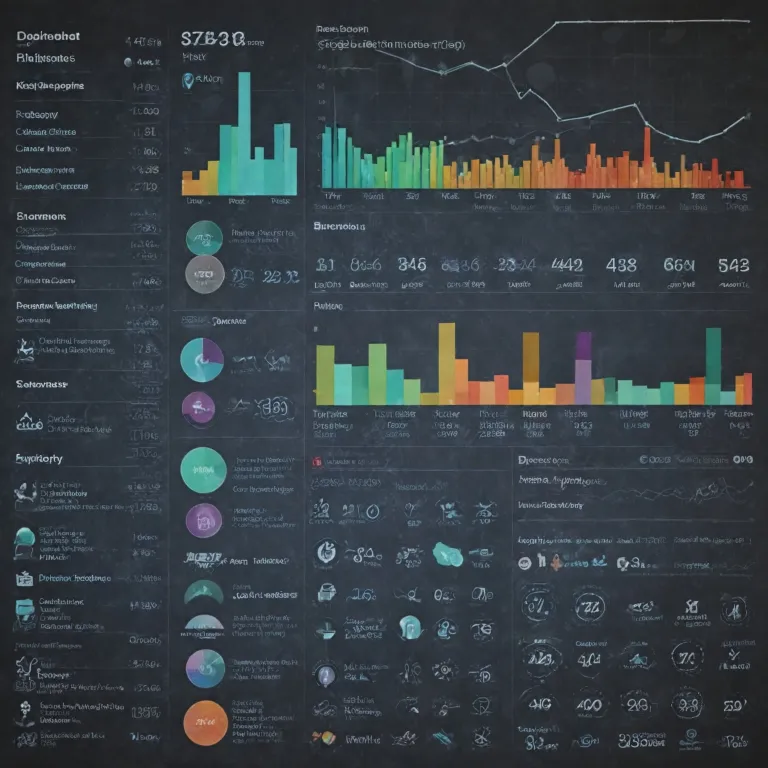
Understanding Pay Parity in the Modern Workplace
In an era where ensuring pay parity becomes more crucial than ever, understanding the intricacies of equal pay is essential for organizations striving for fairness and equity. Pay parity refers to the practice of compensating employees fairly and equally for similar roles across gender, race, and other differentiating factors. It involves addressing and closing any existing pay gaps and ensuring compensation practices are equitable throughout the organization.
The Evolution of Pay Parity in Workplaces
The concept of pay parity is not new, but it has gained significant attention in the modern workplace due to increasing awareness of pay disparities affecting qualified professionals. Factors such as unconscious bias and historical practices have often resulted in uneven compensation, particularly affecting gender and race groups. Many organizations have recognized the need to review their salary structures and implement pay equity measures as part of their diversity, equity, and inclusion (DEI) initiatives. This has led to the integration of human resources analytics as a powerful tool for identifying and resolving these issues.
Pay Disparities Across Different Sectors
It is particularly important to assess pay disparities across various sectors, including early childhood education and teaching, where historical pay gaps have been prevalent. In these fields, achieving pay equity involves not only adjusting salary discrepancies but also considering the broader context of equal opportunities in hiring promotions and performance reviews.
Understanding the Bigger Picture through HR Analytics
Comprehensive analysis, often facilitated by HR analytics, examines factors beyond basic salary discrepancies, such as work experience, education level, and job performance. Utilizing data-driven insights helps organizations not only identify pay gaps but also understand the underlying causes and informs more effective parity programs.
For those interested in expanding their knowledge on this topic, a deeper understanding of workforce analytics can provide valuable insights into the mechanisms for achieving pay parity.
The Role of Human Resources Analytics in Identifying Pay Discrepancies
Leveraging Data for Salary Discrepancy Detection
The pursuit of pay parity and equity requires organizations to effectively leverage human resources analytics. This data-driven approach is instrumental in identifying and addressing pay disparities, particularly surrounding gender, race, and work experience. In modern workplaces, organizations utilize specialized software to analyze compensation data, which provides a comprehensive overview of salary structures across various employee demographics.
Role of HR Analytics in Identifying Pay Gaps
Human resources analytics enables organizations to meticulously dissect salary data, revealing patterns of compensation that may contribute to inequities. This includes uncovering pay gaps that may have resulted from unconscious biases, outdated pay practices, or systemic issues in hiring and promotion processes. By employing advanced analytics, HR departments can pinpoint these discrepancies early, allowing them to develop actionable strategies aimed at achieving pay parity.
Comprehensive Data Analysis
- Performance Reviews: Data analysis often incorporates performance reviews to ensure that salary differences are justified by employee achievements and qualifications.
- Education and Work Experience: HR analytics evaluates metrics related to childhood education background and cumulative work experience to ensure fair compensation practices.
- Comparison Across Demographics: Analysis includes a detailed breakdown of salaries by gender and race, allowing organizations to address any disparities in parity pay effectively.
Addressing Historical Inequities
Organizations must also be vigilant about addressing historical pay imbalances. By analyzing past compensation records, they can create parity programs informed by solid, data-driven insights. Such initiatives are essential not only for achieving fair pay but also for fostering an inclusive and equitable work environment.
For those interested in further understanding employment dynamics and how they intersect with pay practices, our detailed analysis on employment at will provides additional insights.
Challenges in Achieving Pay Parity
Overcoming Barriers in the Journey to Pay Parity
Achieving pay parity in organizations is more challenging than many might anticipate. Despite a growing awareness and a push towards transparency and fairness, several hurdles continue to impede progress. Understanding these challenges is crucial to addressing them effectively.- Unconscious Bias in Pay Practices: One of the more elusive challenges in achieving pay equity is the unconscious bias that often influences compensation decisions. This refers to the stereotypes and preconceptions that subtly impact salary determinations, particularly along gender and race lines. Unconscious bias, though difficult to identify and measure, can lead to significant pay disparities if not actively managed.
- Inconsistent Compensation Structures: Many organizations lack consistent criteria for determining salaries, resulting in unequal pay for similarly qualified individuals. Variables such as work experience, education level, or job performance reviews may not be uniformly considered across all departments, leading to variance in pay for comparable roles. Such disparities can stem from historical pay practices or unchecked managerial discretion.
- Limited Pay Transparency: Transparency is key in addressing pay gaps, yet many companies remain hesitant to fully disclose compensation data. Without transparency, it is challenging for employees to understand how their pay stacks up against others in similar positions. This gap in understanding can perpetuate inequity and mistrust.
- Lack of Robust Data and Analysis: A significant barrier to achieving pay parity is the absence of comprehensive data analysis regarding pay discrepancies. Organizations often lack the tools or expertise to perform detailed analyses of pay practices, hindering their ability to identify and rectify pay gaps. To address pay disparities, it is vital to engage in thorough analysis using human resources analytics.
Strategies for Implementing Pay Parity
Implementing Effective Compensation Policies
Achieving equitable compensation through structural changes within organizations can have a significant impact on advancing pay parity. This begins with setting clear guidelines for pay practices to ensure fair salary distribution among employees. Organizations need to conduct comprehensive pay analyses to identify any existing pay gaps and create a baseline for improvement. This foundation will provide a solid ground for implementing modifications that address disparities in compensation.Transparent Performance Reviews
Transparent performance evaluations are vital in implementing fair compensation practices. By establishing clear criteria for performance reviews and consistent communication of expectations, organizations can link salary increments and promotions to merit rather than unconscious bias. Open dialogues can foster a culture of transparency, empowering employees with insights into their performance metrics and the expectations needed to progress.Education and Training to Mitigate Unconscious Bias
Education plays a critical role in reducing unconscious bias in pay practices. Organizations should prioritize training programs that focus on bias education and emphasize the significance of equal pay. Such initiatives need to be continuously fostered from early childhood education to professional realms, ensuring that employees understand and champion the principles of pay equity. These programs, delivered early in an employee's work experience, can cultivate fairer hiring and promotion practices, as well as assist in closing pay gaps across different gender and race groups.Developing a Comprehensive Parity Program
A structured parity program is crucial for providing the required support to achieve pay equity effectively. This includes a detailed strategy for addressing pay disparities, developing guidelines for equal pay for equal work, and ensuring competitive compensation packages for all qualified employees. Organizations must also commit to a periodic analysis to assess their progress towards achieving their parity goals. Regular updates to these programs will enable organizations to adapt to the dynamic workforce landscape, ensuring they remain aligned with best practices and legal requirements in parity pay and compensation equity.Case Studies: Successful Pay Parity Initiatives
Empowering Fair Practices Through High-Impact Case Studies
For organizations aiming to achieve pay parity, learning from successful case studies can provide valuable insights into effective strategies. These case studies highlight the importance of human resources analytics in identifying pay disparities and promoting equitable compensation structures.- Educational Institution's Commitment to Transparent Pay Practices
- An educational institution focused on early childhood education decided to address pay gaps by conducting a detailed analysis of their compensation strategies. By integrating education-related pay practices and actively working to minimize the gender pay gap, they succeeded in providing fair compensation to all employees, irrespective of their gender or race. The outcome was a more equitable, performance-incentive oriented pay system, recognized for its transparency.
- Tech Company's Road to Gender Pay Equity
- A tech company widely renowned for its innovative products implemented a comprehensive parity program focused on gender and race. Through extensive data analysis, they uncovered unconscious bias in hiring and promotion practices. By adopting fair pay practices, unbiased performance reviews, and increasing pay transparency, the company reduced its gender pay gap, resulting in heightened employee satisfaction and retention.
- Nonprofit's Initiative in Achieving Pay Parity
- Within the nonprofit sector, an organization dedicated to childhood advocacy decided to tackle salary disparities among their workforce. Highlighting compensation inequities through robust HR analytics, they committed to equal pay by adjusting salaries of underpaid but equally qualified employees. Their fair pay approach emphasized the importance of transparent dialogue and continuous review of pay structures. By actively educating employees on these efforts, the organization fostered a culture of trust and respect.
Future Trends in Pay Parity and HR Analytics
Emerging Patterns in Pay Equity
The landscape of pay parity is continuously evolving, and organizations are increasingly relying on advanced analytics to keep pace with these changes. Human resources analytics plays a pivotal role in dissecting compensation practices to ensure equal pay for all employees regardless of gender, race, or any other diversity factor.- Data-Driven Insights: Companies are leveraging data analysis to identify disparities in salaries. By examining data based on education, work experience, and performance reviews, employers can pinpoint unfair pay gaps and implement measures to bridge these gaps effectively.
- Embracing Transparency: Pay transparency is gaining importance as a practice that fosters trust and encourages fair compensation. Organizations that adopt transparent pay practices are better positioned to address pay gaps early and foster a culture of equity.
- Advanced Technology: Predictive analytics and AI-based solutions are beginning to shape how pay practices are evaluated and improved. These technologies help in recognizing patterns of unconscious bias and suggest algorithm-based compensation decisions.
- Customized Compensation Strategies: Personalized salary packages that account for individual achievements and goals are becoming more prevalent. Such strategies ensure that pay is aligned with employee performance and contribution to the organization.
Workforce Diversity and Its Impact
The push for diversity within organizations is further propelling the movement towards achieving pay equity. Gender and race, particularly, are focal points in this drive for inclusion.- Promoting Equal Opportunities: Organizations are emphasizing hiring and promotion practices that are inclusive and equitable. This ensures a diverse pool of qualified candidates for every level of the workforce.
- Redefining Early Childhood Education Compensation: Even sectors traditionally plagued by pay disparities, such as early childhood teaching, are beginning to prioritize pay equity. By focusing on providing fair compensation to educators, there is potential for significant impact on the industry’s standards.
- Combating Unconscious Bias: By conducting a thorough analysis of existing pay structures, companies can identify and eliminate unconscious biases that have historically contributed to pay disparities. This is a critical step towards achieving meaningful pay parity.
Looking Forward: The Role of Education
As organizations continue to prioritize pay parity, ongoing education around bias and equity remains crucial.- Continuous Learning: Offering training programs on unconscious bias and pay practices ensures that employees at all levels are informed and committed to maintaining equitable compensation strategies.
- Comprehensive Compensation Reviews: Regular reviews of compensation strategies will provide insights into their effectiveness and highlight areas that require adjustment.













